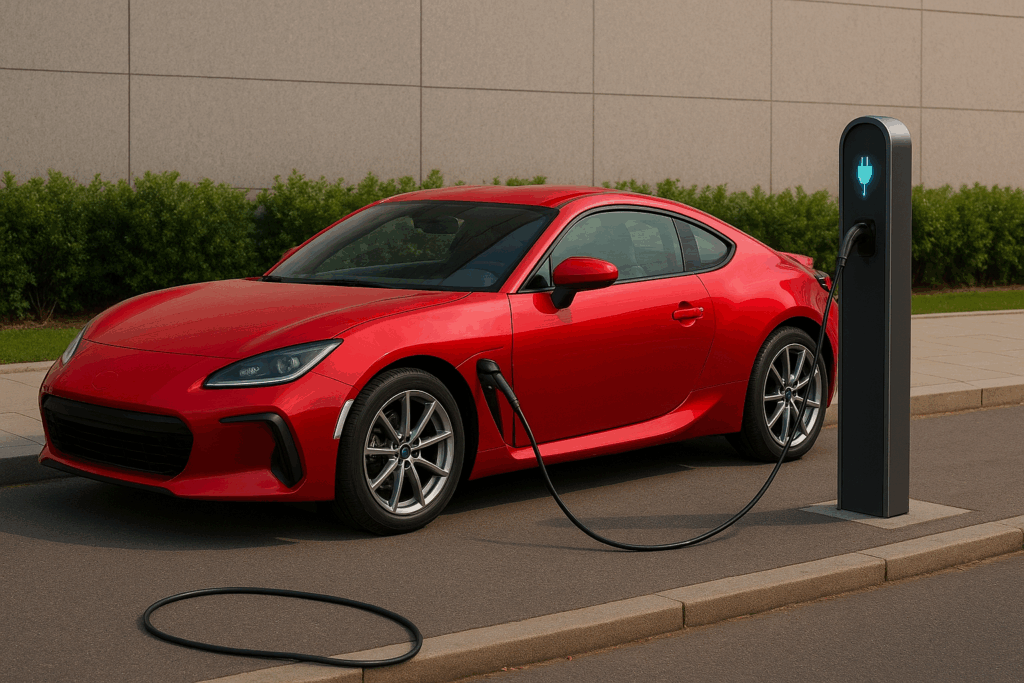Plug-in hybrid cars are presented as the ideal vehicles and a logical transition toward fully electric cars. They offer the advantages of an electric car with a range that, in newer models, exceeds 100 km — perfectly suitable for everyday urban trips. If we take a long journey or travel to a place without charging points, we can rely on the combustion engine to keep moving. They also spare us the stress of running out of battery, since we can always continue driving with the thermal engine.

So, what’s the problem? Why are they not being viewed favorably lately? We’ll try to answer these questions in this article.
For several years now, all cars have been required to have a mobile network connection that links the vehicle to the manufacturer’s communication center. This mobile connection offers many advantages: it allows emergency calls to be made from the car — even automatically when the vehicle detects a collision — and also makes it possible to control certain functions through an app on our smartphone.
But in addition to these functions, the vehicle also transmits usage data to the manufacturer, which eventually reaches public authorities. And what have these public authorities discovered? That the use of the car in electric mode is much lower than expected — and than what manufacturers had claimed. Some users have been found to never charge their vehicles and to rely exclusively on the combustion engine. In other words, they bought a plug-in hybrid vehicle mainly to take advantage of benefits such as government subsidies, access to city centers, or cheaper (or even free) parking.
These reasons have put politicians on alert and led them to believe that these cars are not being used properly, and that their environmental goals will not be met. There are no plans to phase them out, but there is growing consideration to reduce — or even eliminate — the incentives that promote them.
Moreover, their price doesn’t help. These vehicles are among the most expensive, since they include both a combustion engine and one or more electric motors, as well as the mechanical and electronic systems needed for all the engines to work together. This results in a level of complexity that other cars don’t have.
And why aren’t they being used properly?
Before blaming the users, we need to understand the reasons why the electric usage of these vehicles is lower than expected. The reasons are varied:
- Battery size: Early plug-in hybrids had a range of 40 km, which in reality dropped to just over 30 km. This range is clearly insufficient for many trips. However, newer models now offer a range exceeding 100 km. To avoid issues on urban journeys, we need a range of around 200 km, so it’s clear that the latest models are getting closer to that value.
- Charging convenience: The most convenient way to charge an electric car is with a home charger. Public charging, on the other hand, is often a nightmare: chargers that don’t work, a wide variety of sometimes poorly designed apps, and chargers that are fully occupied on certain days. I consider myself quite interested in using my vehicle in electric mode, yet I often get frustrated dealing with these public chargers.
- Long trips: On long journeys, the battery depletes quickly. Consumption is somewhat higher than in city driving, especially when we want to drive “actively” but cover many kilometers. This means that even with an electric car with a large battery, we may have to stop halfway. This stop can last up to 2 hours to fully recharge at a fast charger.
- Limited infrastructure: Not all areas have adequate charging infrastructure. Big cities usually have good coverage, but in small towns, the situation changes drastically. In mountainous areas or natural parks, finding a charging point is unlikely.
Environmental goals are often quite ambitious and don’t always account for these practical factors. Electric cars can cause anxiety for users on long trips — anxiety that doesn’t exist with a plug-in hybrid. Politicians should be more aware of these challenges before blaming the users.
So, what can we do as users?
Aside from the issue of the higher price, which has no easy solution, buying a plug-in hybrid vehicle is a far more rational decision than purchasing a fully electric car. The greater range of the new plug-in hybrids allows for more practical use in urban trips, and on longer journeys, there’s no need to overthink it — we can simply use the combustion engine and forget about electricity. Our minds will thank us.
Electric driving in the city is very pleasant, but on long trips, having a combustion engine is much better. The efficiency of a combustion engine on the highway is quite good, especially with diesel engines, so fuel consumption isn’t very high even with faster driving. It’s not that electric motors don’t work well, but the cost per kWh at public chargers is very high (between €0.35 and €0.50 at a fast charger), and energy consumption increases significantly with speed. On top of that, there’s the anxiety of potentially running out of battery — something often overlooked but very real.
For now, politicians are not considering banning plug-in hybrids or removing incentives and subsidies. The only discussion is about modifying the WLTP method to measure real-world consumption more accurately. This won’t be an issue thanks to the increased range of new models. For second-hand plug-in hybrids, it won’t be a problem either, since any changes won’t be applied retroactively.
Therefore, whether new or used, a plug-in hybrid vehicle is a far more logical choice than a fully electric car.






